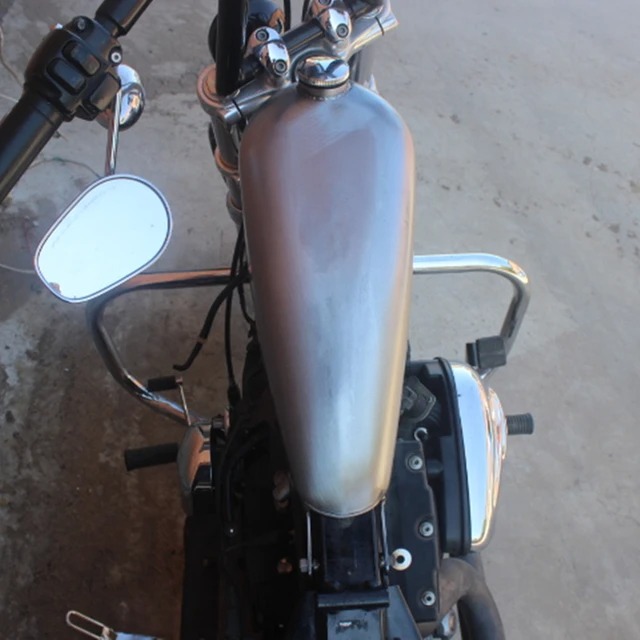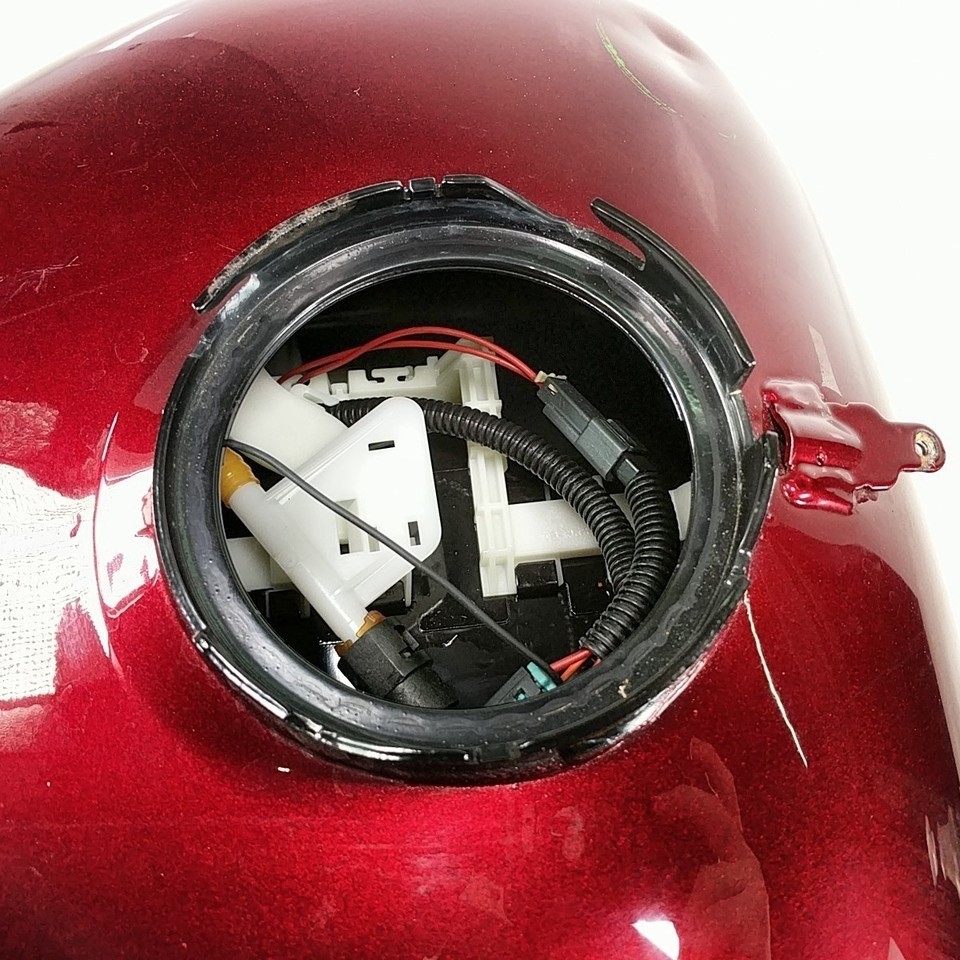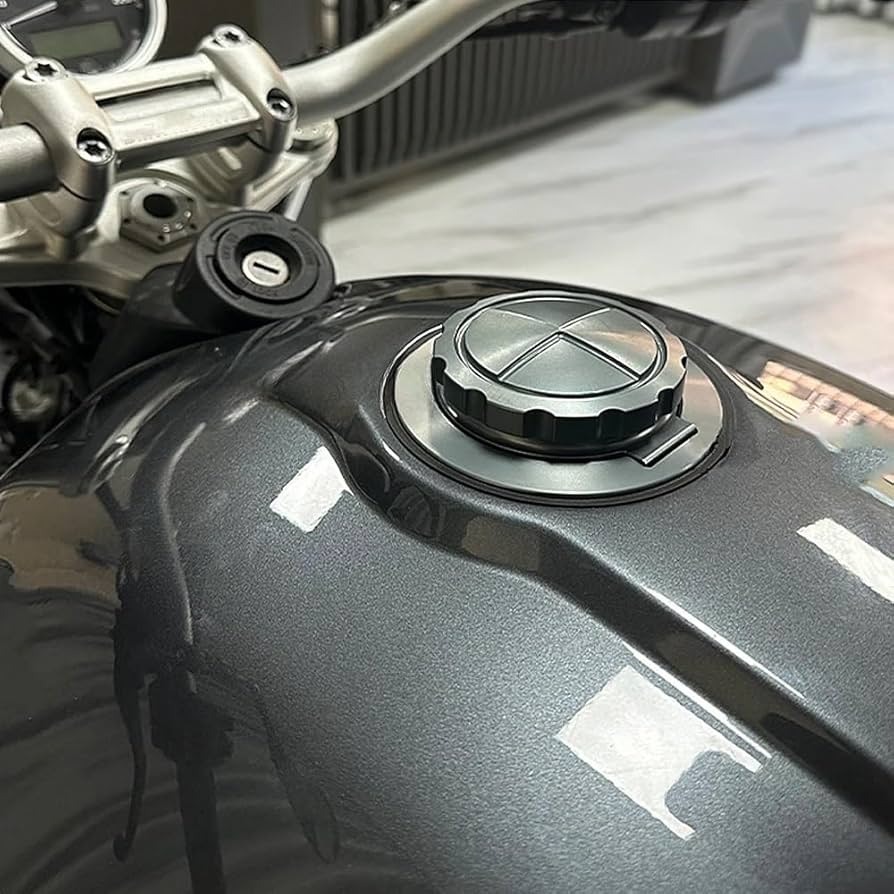Jan 7, 2025
How to Clean Your Motorcycle Gas Tank Effectively
Common Issues with Motorcycle Gas Tanks
Over time, motorcycle gas tanks can face various issues that affect performance and appearance. Understanding these common problems helps plan for effective solutions.
Types of Damage to Gas Tank Exteriors
Motorcycle gas tanks often suffer exterior damage. Common types include:
- Paint Damage: Scratches or peeling often occur due to accidents or improper handling. For instance, placing luggage directly on the tank without protection can cause scratches. Additionally, leaving the gas tank exposed without a protective cover when not in use contributes to paint damage.
- Dents and Deformities: These might result from impacts during falls or collisions. Dents not only affect the aesthetic but could also compromise the tank’s integrity.
Rust Formation within Motorcycle Gas Tanks
Rust is another significant issue for motorcycle gas tanks, especially from the inside. Key factors leading to rust include:
- Prolonged Exposure to Moisture: Rust forms when metal remains exposed to moisture for extended periods. If your gas tank has lingering moisture, rust can begin to develop.
- Infrequent Tank Usage and Care: Gas tanks that are not regularly filled or are improperly closed are more prone to rusting. Quality of fuel also matters; using poor quality fuel can facilitate rust development due to impurities.
To prevent and deal with these common issues, specific cleaning and maintenance techniques are necessary. These will not only enhance the lifespan of your motorcycle’s gas tank but also its performance and looks.
External Cleaning Methods for Motorcycle Gas Tanks

Maintaining the exterior of your motorcycle gas tank is essential for both aesthetics and protection. Regular cleaning and protective measures help preserve the tank’s paint and prevent damage. Discover effective ways on how to clean motorcycle gas tank to enhance performance and longevity. Learn simple & effective cleaning tips.
Regular Washing Techniques
Begin by washing your gas tank regularly to remove grit and grime. Use a mild detergent and warm water for best results. Rinse thoroughly to avoid soap residue, which can attract more dirt. A clean tank is less likely to get scratched and develop rust.
Application of Waxes and Ceramic Coatings
After washing, applying a coat of quality wax can protect your tank’s paint. Waxing gives a glossy finish and acts as a barrier against contaminants. For a longer-lasting solution, consider a ceramic coating for your tank. Ceramic coatings provide a durable layer that can last several months to a year, keeping your motorcycle shiny and well-protected.
Protective Wrapping
Another option for protecting your tank is wrapping it. Use a clear plastic sheet or a specialized tank protector. Wrapping prevents scratches, especially from zippers or buckles on riding gear. It preserves the look of your bike while offering an extra layer of protection against the elements.
Internal Cleaning Techniques for Motorcycle Gas Tanks
Cleaning the inside of a motorcycle gas tank is crucial for optimal performance. Several methods can remove rust and residue effectively.
Using Muriatic Acid
For tough rust, muriatic acid is a strong option. Ensure all safety gear is worn. Remove the gas tank and drain it. Mix the acid with water and fill the tank. After some time, drain it and dry thoroughly. End with diesel to coat the inside and prevent rust.
Application of Phosphoric Acid
Similar to muriatic acid, phosphoric acid also removes rust. Empty, clean, and fill the tank with the acid. Rinse well following the procedure and dry. Use safety gear to avoid any harm.
Vinegar and Baking Soda Method
For a safe and eco-friendly option, use vinegar. Fill the tank and leave it for a day. Drain and rinse with a baking soda solution to neutralize the acid. This method is cost-effective but requires time to work.
Electrolytic Rust Removal
Electrolysis is a technical but efficient method. It uses electrical current to dissolve rust. Set up the system carefully, following all safety precautions. After the process, ensure the tank is rinsed and dried completely.
Chemical Rust Removers
For a quick fix, commercial rust removers like WD-40 are available. They are easy to use and work fast but can be costly. Follow the instructions on the product for the best results.
Each method has its pros and cons. The choice depends on the severity of rust, available resources, and personal preference. Always prioritize safety and ensure proper ventilation when dealing with chemicals.
Preventative Measures for Gas Tank Maintenance

Regular upkeep can keep your motorcycle’s gas tank in top condition. Preventative practices can deter rust and damage, ensuring long-term performance and quality.
Best Practices for Preventing Rust
To stave off rust in gas tanks, here are best practices every motorcycle owner should follow:
- Keep the tank full: This minimizes air and moisture inside, reducing rust risk.
- Use quality fuel: High-quality gasoline has additives that protect against rust.
- Frequent use: Running the motorcycle keeps fuel and components moving, preventing stagnation.
- Regular checks: Inspect for early signs of rust or deterioration and address them promptly.
- Oil coatings: When storing, coat the tank’s interior with light oil to create a barrier against moisture.
- Seal properly: Always ensure your gas cap is tight to prevent moisture from getting inside.
Ideal Conditions for Motorcycle Gas Tanks
Your motorcycle gas tank will stay cleaner and rust-free under certain conditions:
- Dry and cool storage: Park your bike in a location that is away from direct sunlight and moisture.
- Regular cleaning: Both internal and external cleaning prevents buildup that can lead to rust.
- Ventilation: Good airflow in the storage area helps keep the tank dry.
- Fuel stabilizers: If storing for long periods, use stabilizers to prevent fuel degradation.
- Routine maintenance: Stick to a detailed maintenance schedule to identify and address issues early.
By implementing these guidelines, bikers can enjoy a clean, functional gas tank free from rust or other contaminants.
FAQs on Cleaning Motorcycle Gas Tanks

Best Rust Removal Options
For motorcycle gas tanks, several rust removal methods exist:
- Vinegar and Baking Soda: This method is eco-friendly and cost-effective but slow.
- Commercial Rust Removers: Products like WD-40 are fast-acting and easy to use but higher in cost.
- Muriatic Acid: Potent for severe rust, yet requires careful handling and safety gear.
- Electrolysis: Efficient and thorough, suitable for deep rust, though technically complex.
Choose based on time available, budget, and severity of rust.
Identifying Rust in Gas Tanks
To check for rust inside a gas tank, follow these simple steps:
- Open the gas tank cap.
- Use a flashlight to look inside.
- Observe for any brownish discoloration or flakes, indicating rust presence.
Regular checks can help you catch and address rust early.
Preventing Rust Post-Cleaning
After cleaning a motorcycle gas tank, take steps to prevent rust:
- Keep the tank full to limit air exposure.
- Use oil or diesel: Apply a thin layer inside the tank.
- Close the cap tightly: This prevents moisture from entering.
These practices will help maintain a rust-free gas tank.
Causes of Gas Tank Rusting
Gas tanks can rust due to several factors:
- Moisture: Enters if the tank is not sealed properly.
- Poor fuel quality: Impurities in fuel can promote rust.
- Long periods unused: Stagnant conditions foster rust.
Understanding these factors can guide better tank management.
Neutralizing Agents for Acetic Acid
After using vinegar for rust removal, neutralize the residual acetic acid:
- Rinse the tank with water.
- Fill it with a solution of baking soda and water.
- This neutralizes acetic acid and prevents further corrosion.
Thus protecting the metal from potential damage.
Conclusion
Knowing how to clean motorcycle gas tank is a valuable skill for any motorcycle owner. From preparation and safe removal to deep cleaning and reassembly, each step plays a crucial role in maintaining your bike’s performance and longevity. Regular maintenance and attention to detail can prevent costly repairs and ensure that your motorcycle runs smoothly, providing you with many miles of enjoyable riding.
More Details